Tom Anderson, the American entrepreneur famed among Millennials, is one of the founders of the social networking site Myspace. Anderson is now retired after having sold his multimillion-dollar business.
As of 2024, Tom Anderson’s net worth is estimated at over $50 million.
Anderson, or as people call him, Myspace Tom, co-founded the platform with Chris DeWolfe back in 2003. The platform became a cultural phenomenon and propelled him to incredible fame, allowing him to retire in his 30s.
In this article, we’ll tell you the details of the story of the Myspace co-founder, his accomplishments, wealth, and life since being one of the original social media entrepreneurs.
How Much is Tom Anderson Worth in 2024?
- Net Worth: Estimated at $50 million in 2024, primarily from the sale of Myspace and other business ventures.
- Myspace Sale: Co-founded Myspace and sold it to News Corp for $580 million in 2005.
- Early Career: Started as a computer programmer and co-founded ResponseBase before Myspace.
- Retirement: Retired from the tech industry and now focuses on photography and travel.
- Real Estate: Owns properties worth over $3 million.
- Philanthropy: Engages in various charitable activities and donations.
Tom Anderson’s Net Worth: Full Breakdown
The wealth of Tom from Myspace has been discussed and debated over the years, with tons of contradictory data about his earnings from Myspace’s sale and how much he’s worth these days.
Based on our detailed research, we’ve managed to create a breakdown of his main assets and earnings over the years, contributing to an estimated net worth of $50 million.
| Asset or Income Source | Contribution to Net Worth |
| Response Base sale | Undisclosed |
| Redpoint equity sale, 2004 | $3 million |
| Myspace sale to News Corps | $10 million |
| Myspace salary, 2005-6 | $30 million |
| Other investments | Undisclosed |
| Real estate | $3 million |
| Total Net Worth | $50 million |
6 Fun Facts about Tom Anderson, the Co-founder of Myspace
- Tom Anderson is popularly known as “Myspace Tom”.
- He was everyone’s first friend on Myspace.
- Anderson is an avid photographer and travels the world capturing landscapes.
- He once hacked into the Chase Manhattan Bank’s computer system at age 14.
- He studied English and rhetoric at the University of California, Berkeley.
- Anderson made a cameo appearance in the movie “Funny People”.
Latest News & Controversies
Myspace Tom has been keeping a low profile since selling Myspace in 2005 for $580 million to News Corp.
These days, Anderson is more focused on photography and travel, often sharing his work online.
In recent news, fans have reminisced about his iconic role as the first friend on Myspace and praised him for keeping the platform free from the controversies that have plagued modern social media, like data misuse and disinformation. Anderson continues to maintain a quiet, controversy-free lifestyle, enjoying his retirement through creative ventures and travel.
His real estate investments and occasional social media appearances, mainly through photography, keep him connected with his legacy as a tech pioneer.
Early Life and Education
Thomas Anderson was born in Escondido, California, on November 8, 1970.
He studied at San Pasqual High, where he started computer hacking and used the pseudonym Lord Flathead. Showing his programming talents early in life, he even prompted an FBI raid on his home after he hacked into the computer system of Chase Manhattan Bank in high school.
Anderson was only fourteen years old at the time, and not only did he hack the bank’s system, but he showed his friends how to do it as well.
He passed the first level of security and changed several passwords to prevent people at the bank from accessing the system. According to TechCrunch, he and his friends also created fictitious accounts.
Since he was a minor, he wasn’t arrested, but the FBI had to confiscate all of his computer equipment.
Anderson kept his computer hacker name, Lord Flathead, at least until he was 13 years old, working on his skills over time.
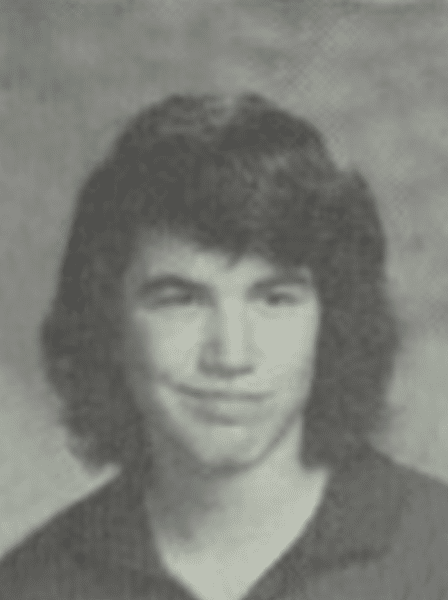
After graduation, Anderson enrolled at the University of California Berkley, where he majored in English and rhetoric.
At around this time, he was the lead singer of a band called Swank, and soon after graduation, he spent some time living in Taiwan before he returned to the US to continue his studies. Swank broke up in 2000.
After Taiwan, Anderson enrolled at the University of California in Los Angeles to study film.
Personal Interests
As the man behind one of the most popular online platforms of all time, Anderson is very active on social media, which includes Instagram and Facebook. However, he wasn’t always interested in the career path he chose, despite his incredible talent for programming:
“If you knew me before Myspace, you’d probably thought I’d have been a scholar teaching philosophy in a university my whole life. If you met me before college, you’d probably have thought I’d be a musician for my entire life… I like change,” he shared in 2014.
At around this time, Anderson became interested in photography and currently travels the world making landscape images, which he shares on his Instagram account myspacetom.
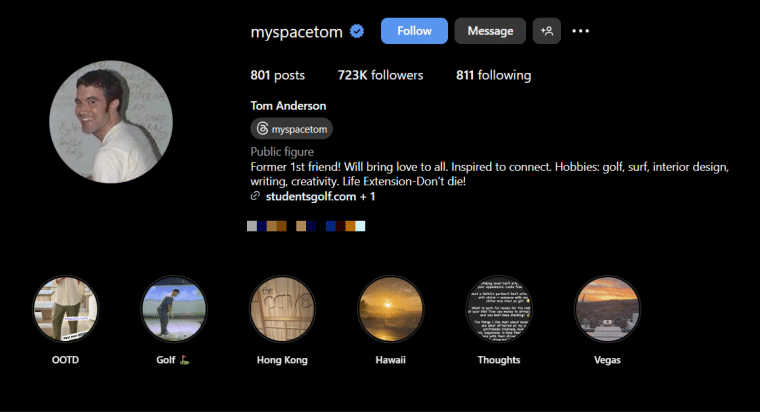
Tom Anderson: The Birth and Sale of Myspace
Myspace wasn’t Tom Anderson’s first project after school. He worked for at least three other companies before he created the social media platform, one of which was his own business.
Let’s take a look at how Myspace came to be.
Early Career
In 2000, Tom Anderson worked as a copywriter and product tester at XDrive, a digital storage company. After answering a flyer advertisement, he was employed by the company, looking to make some extra money while still at film school. This is where he met his friend and future Myspace partner Chris DeWolfe.
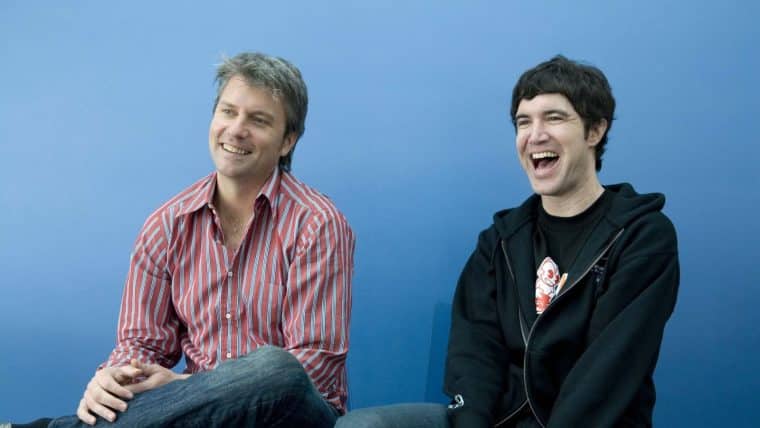
“We met in 2000. Tom was deep in student debt and answered an ad to earn $20 testing a product for Xdrive, a data storage company where I was head of sales and marketing. He hated the Xdrive product. I liked Tom’s candor and offered him a job. Tom asked me, ‘What do I do?’ I said, ‘Go figure out how to make money’,” shared DeWolfe.
The company went bankrupt a year after his employment at XDrive, prompting him to find a different job.
However, instead of working for someone else, Tom Anderson and his friend Chris DeWolfe decided to start their own company. They co-founded ResponseBase, a direct marketing company which they later sold to eUniverse.
Anderson’s Work at eUniverse and the Creation of Myspace
Within a single year, Anderson’s new venture had grown enough to sell for several million dollars, according to CNN, though the exact amount hasn’t been publicly disclosed.
After the sale of ResponseBase, the two friends became eUniverse employees.
Having pocketed a lot of money, they decided that it was time for a new project and they agreed on a social networking platform following the launch of Friendster.
eUniverse employed several people who used Friendster, so the duo quickly recognized the potential of creating such a network. They decided to form a team and create Myspace, which turned into a success in only a few years.
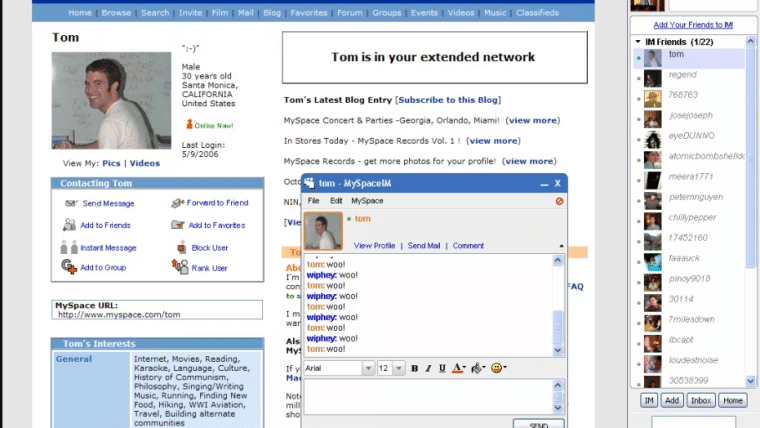
MySpace launched in 2003. When eUniverse turned into Intermix Media, MySpace became one of the more popular social media platforms. In two years, the social media network was used by 16 million people monthly with 200,000 new users signing in every day.
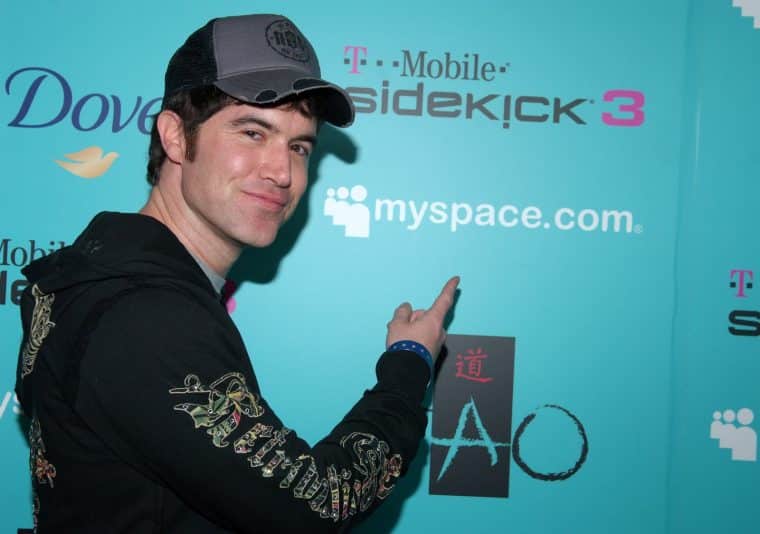
When Anderson and DeWolfe launched Myspace, they invited local club owners and bands to post pages and allowed other users to “friend” them on the platform.
“I remember those early days when we had time to go to the Viper Room and other clubs to check out new music every week. It was pretty much a great way to work. The bands turned out to be our best marketing tool,” DeWolfe shared later on. He went on to say:
All these creative people became ambassadors for MySpace by using us as their de facto promotional platform. People like to talk about music, so the bands set up a natural environment to communicate.
In June 2006, MySpace became the most popular social network in the United States, a rank it held until April 2008 when Facebook took over the accolade.
At the prime of the business, Myspace employed around 1,600 people.
Selling Myspace
In 2005, the partners decided to sell Myspace to News Corp, Rupert Murdoch’s company, for a whopping $580 million. After the News Corp acquisition Anderson, affectionately referred to as Tom from Myspace at the time, became president of the company.
“Before [the acquisition], I could do whatever I wanted. Now it takes more time to get people to agree on things. All the budget reviews and processes. That can be a pain. But it’s not stopping us,” Anderson said at the time.
He remained the company’s president until April 2009 when News Corp replaced him. By 2010, he was no longer the default friend on MySpace, as the company replaced him with a profile called T.O.M. or Today on Myspace.
This change occurred at a challenging time for Myspace. Like other social media platforms, the traction of the platform waned. However, the famed “Tom from Myspace” exited the scene at just the right time, reaping substantial financial gains that allowed him to retire soon after. In 2009, Anderson retired and started pursuing his personal interests instead of focusing on business.
In 2011, Myspace had to reduce its employee base by 400 people, and, in June of the same year, the company was sold to Specific Media for $35 million and a 5% equity stake in Specific Media. One of the people with a stake in the deal was Justin Timberlake.
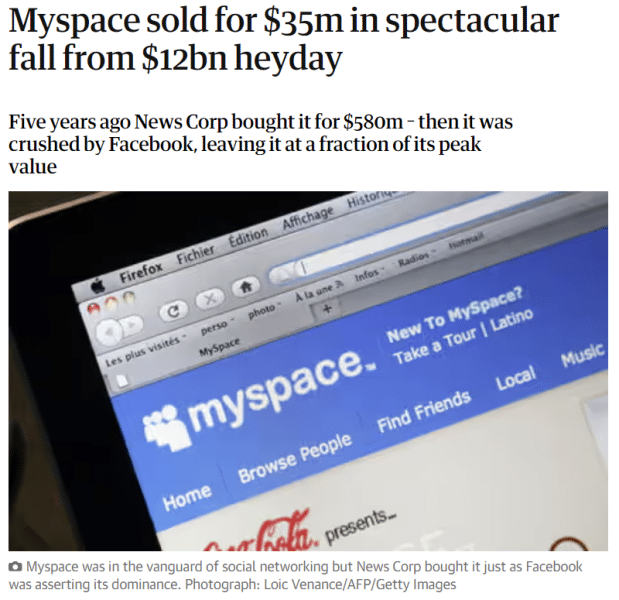
Anderson’s Earnings from MySpace
At the time of the sale to Murdoch’s News Corp, Myspace had been restructured several times, which meant that Anderson and his partner weren’t the only shareholders in the business.
Initially, the company received a $15.3 million early funding round from a company called VantagePoint. In 2005, Redpoint invested another $15.5 million in the business.
At this point, 25% of the company’s equity was reserved for the founders of Myspace, which at this point included Tom Anderson, Chris DeWolfe, and four other employees at the company. The founders sold $3 million worth of their equity to Redpoint, giving the company a 25% stake in Myspace.
However, there was a pretty nasty catch in the Redpoint contract, which prevented the founders from getting a lot of money. If the company succeeded in selling MySpace for over $125 million within a year, the contract stated that the founders’ stake would be limited at a $125 million valuation.
So, when MySpace sold for $580 million, the founders received a combined $21.4 million – or $30 million according to some sources.
According to Stealing Myspace by Julia Angwin, the book about the social platform, Anderson and DeWolfe took $10 million each from the sale, with the remaining founders splitting the rest. The book also indicates that the founders split around $30 million after the sale.
After Myspace’s sale, Anderson stayed on for two more years, earning a total of $30 million as part of the contract.
What Has Tom Anderson Been Doing Since Myspace?
In May 2012, Tom Anderson announced that he would join RocketFrog Interactive as their strategic adviser. RocketFrog was a tiny Los Angeles-based venture that later created the Facebook app.
However, in September 2014, Anderson explained that he didn’t plan to return to his former vocation, stating: “I’ll never say ‘never’ because, more than anything, I like the idea that anything can happen. I don’t know exactly where my life will lead. Adventure and the unknown have always been appealing to me.”
So, what has MySpace’s co-founder been doing since his retirement?
After the sale, he held a low profile and only occasionally surfaced on the web. In 2021, he made a tweet featuring a photo of former President Donald Trump and a joke about gaining a new friend on Myspace.
MySpace founder Tom Anderson reacts to a meme about Trump moving to MySpace after his permanent Twitter suspension. pic.twitter.com/GWFOoqROrJ
— Pop Crave (@PopCrave) January 9, 2021
Anderson’s life after Myspace has seen him traveling the world, residing in many locations including Oahu, Hawaii, Las Vegas, and Los Angeles. His travels have expanded to the Philippines, and Maldives, and he often shares his experiences through photography on his social media platforms.
According to his X/Twitter bio, Anderson is: “Enjoying the good life / New Hobbies: Surfing, Architecture-Design, Photography, Golf”.
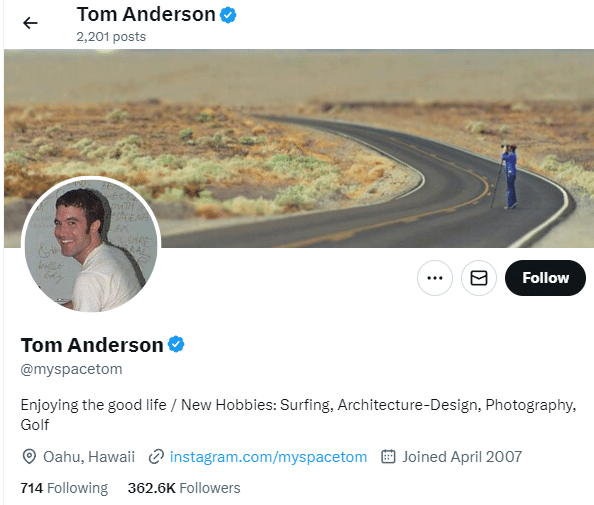
Investments after Myspace
Anderson is officially not working, except for his hobby as a traveling photographer, of course. However, in 2021, he shared that he is a SpaceX investor, though the details of this remain unclear.
Excited to be a SpaceX investor 🚀
— Tom Anderson (@myspacetom) June 25, 2021
Real Estate
Anderson has invested a portion of his earnings from Myspace into real estate, most notably in Las Vegas. According to The Mirror, he has also spent around $3 million on a Hollywood mansion.
Film Debut
In 2009, Anderson had a cameo in Funny People, which starred Adam Sandler, Leslie Mann, and Seth Rogen. There is no official information on how much he earned from his role in the film.
What Can We Learn from Tom Anderson’s Story?
Tom Anderson’s story has a lot to teach us.
For starters, he identified the potential of social networking early on, taking the initiative to co-found a platform that would net him millions a few years later.
This teaches us the importance of investing in yourself and believing in your ideas.
The collaboration with DeWolfe and other key figures played a significant role in Anderson’s success. This highlights the value of teamwork and strategic partnerships.
Despite the complexities of the Redpoint contract, Anderson managed to secure financial gains from the sale of the company, more than most of the shareholders. This demonstrates the importance of negotiating business deals effectively – as well as knowing your worth.
Anderson’s willingness to adapt and innovate, seen through his ventures and eventual pivot to photography, underscores the importance of flexibility in one’s career.
After achieving financial success, Anderson chose to retire early and pursue personal interests like photography.
This illustrates the importance of balancing career achievements with personal fulfillment.